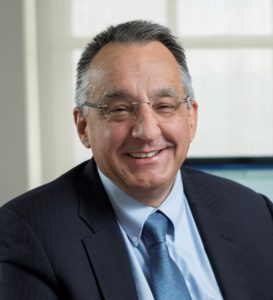By Dan May
Rotary Club of Orange

Dan May
The Rotary Club of Orange, like clubs worldwide, executes service projects in the community and its 40-plus members collectively provide about 2,000 hours in related volunteer roles. In addition to service projects and support, club members sponsor fundraisers and individually contribute both to the club’s foundation and to the global Rotary International Foundation.
Recent projects funded by the club included underwriting and cooking at a tailgate party for Special Olympics athletes at the Yale-Columbia football game along with a grant to the Ansonia-based not-for-profit organization Traveler on a Mission. TOAM provides personal hygiene products (toothpaste, deodorant, shampoos) to those in the area who are food insecure, and their activities complement other club projects with area food pantries. Next up is a Thanksgiving dinner for veterans at the American Legion Hall.
Around the world last year, local Rotary clubs performed and/or funded service projects worth about $2 billion. And the global Rotary International Foundation itself funded nearly $500 million in projects, with the campaign to end polio being one if its largest continuing projects.
A significant part of Rotary activity then is its goals and operations as a charitable organization.
Charity Navigator is the assessment organization that the evaluates hundreds of thousands of charitable organizations based in the US that are operating as tax-free 501 organizations. Charity Navigator also serves as a portal for those exploring giving opportunities for specific or timely needs. For example, they are currently highlighting about 40 organizations addressing the humanitarian crises in Israel and Gaza.
The methodology of Charity Navigator historically emphasized organizational measures for accountability and finance, and they recently added other factors addressing culture and community, as well as leadership and adaptability.
The Rotary Foundation of Rotary International is a four-star charity, and receives a perfect 100 percent score from Charity Navigator. Our local club foundation is only scoring 69 percent now, mainly as we have not posted some policies and financial disclosures on our club website. The club is currently in the process of fixing that as we upgrade our website to make club activities and practices transparent.
Perhaps more important than these administrative disclosures are preliminary efforts to assess impact and results. Ultimately, Charity Navigator hopes to weight impact/results as 50 percent of the total score. As someone who has spent the last few decades trying to assess educational outcomes, I know how challenging this will be. Once I even had to ask a university chaplain how he planned to assess chaplaincy activities to justify his current and projected budgets. His pithy answer: “I will let you know when God gets back to me.”
One of the most interesting experiences in my personal not-for-profit history was when I sat in on a series of state budget hearings in Ohio. I was a board member for a statewide environmental not-for-profit organization that included representatives from heavy industry to staunch preservationists. The first hearings were to review and prioritize expenditures across the range of state environmental needs (such as clean water or clean air). The next rounds allowed me to listen in to see where environmental needs fit versus other needs for K-12 education, prisons, Medicaid, highways, pensions and so forth.
I was amazed to see how much outcomes data were used to guide decision-making even 20 years ago. It was both heartening and disheartening, but I quickly learned that the budget process is where rhetoric meets reality.
Charitable organizations, as well as schools and health care, have a long way to go before impact and results measures can be reliably employed for their own assessment or to help them assess which projects they in turn fund. Part of the challenge is that impact and results may be years in the making.
One advantage local clubs have when deciding how to allocate funds is their history of community engagement, contacts and memory. Most members have lived here for decades if not their entire life and have strong family and professional connections. They are familiar with the community, know what’s been successful in the past, who will get a project completed, and who they might partner with to add additional leverage. It is not wholly objective, but until AI assessment systems can incorporate both soft and hard data and also establish long-term trends, we can reliably count on the collective wisdom of our neighbors to help each other. If you want to help inform the process, too, consider Rotary membership.
Dan May is the president of the Rotary Club of Orange.